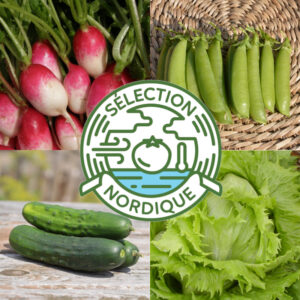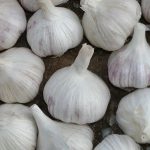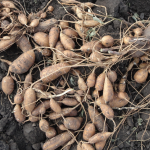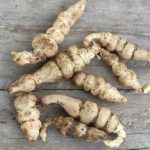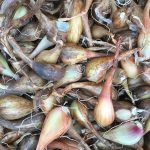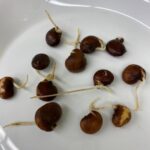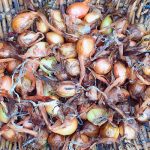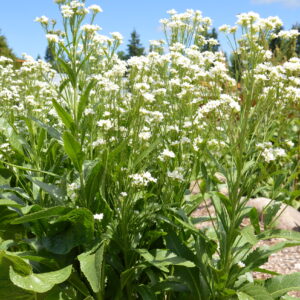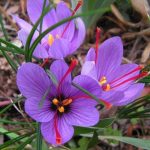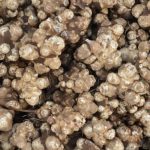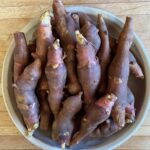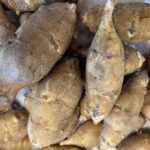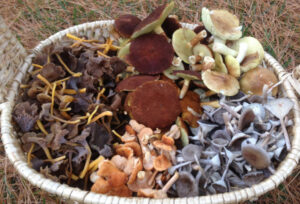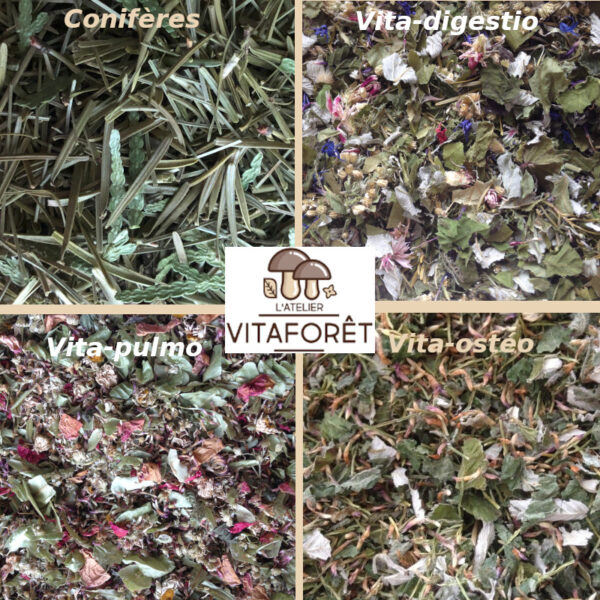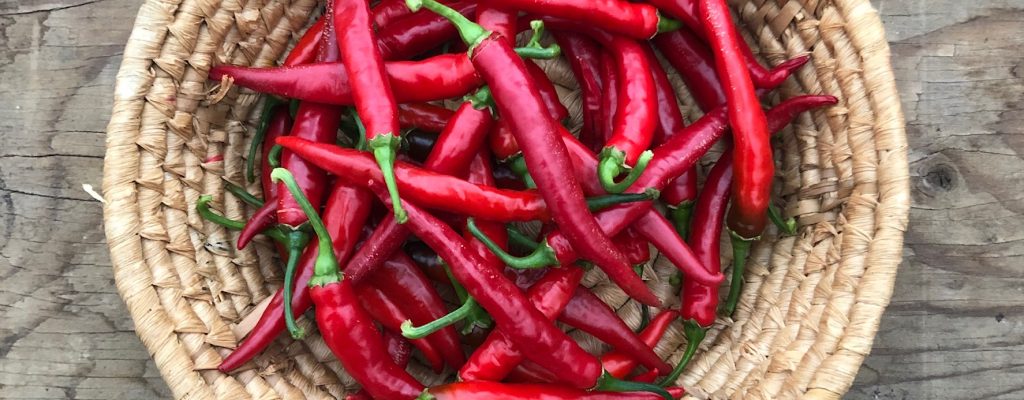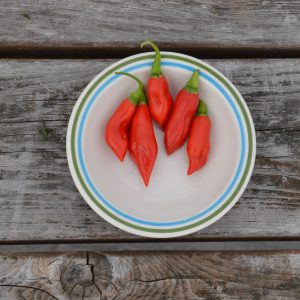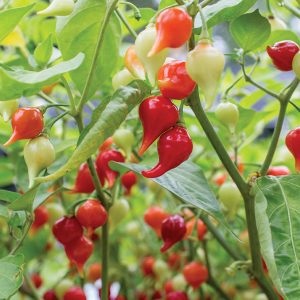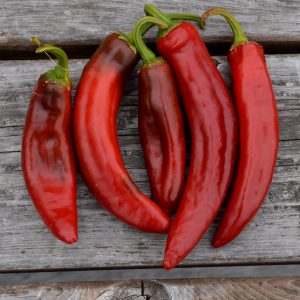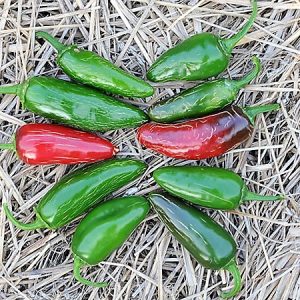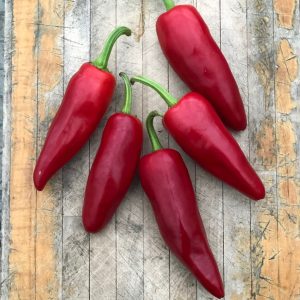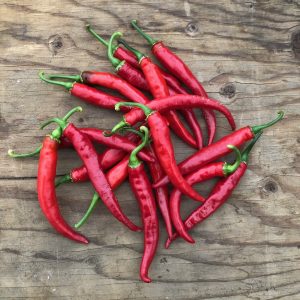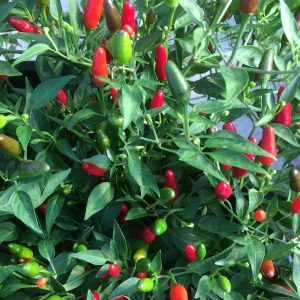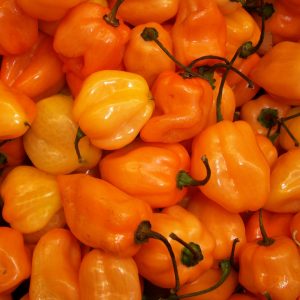From there, due to favorable climate, this plant has spread to Central America and the south of North America where we still observe species of Capsicum wild.
The peppers on our market gardeners' shelves belong to the species C. annum. With a name like that, it's easy to imagine that the life cycle pepper is annual, but no!
It's about a shrubby perennial which grows considerably over many seasons in regions where it does not freeze, with a clear preference for hot, dry climates.
Chilli or bell pepper?
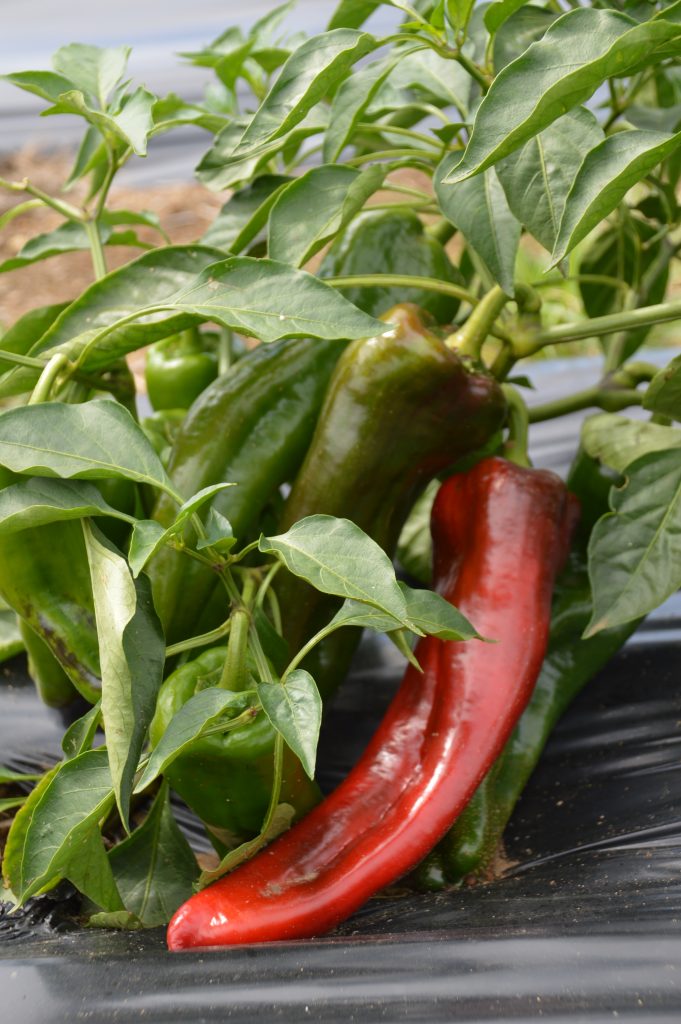
Marconi Red Pepper 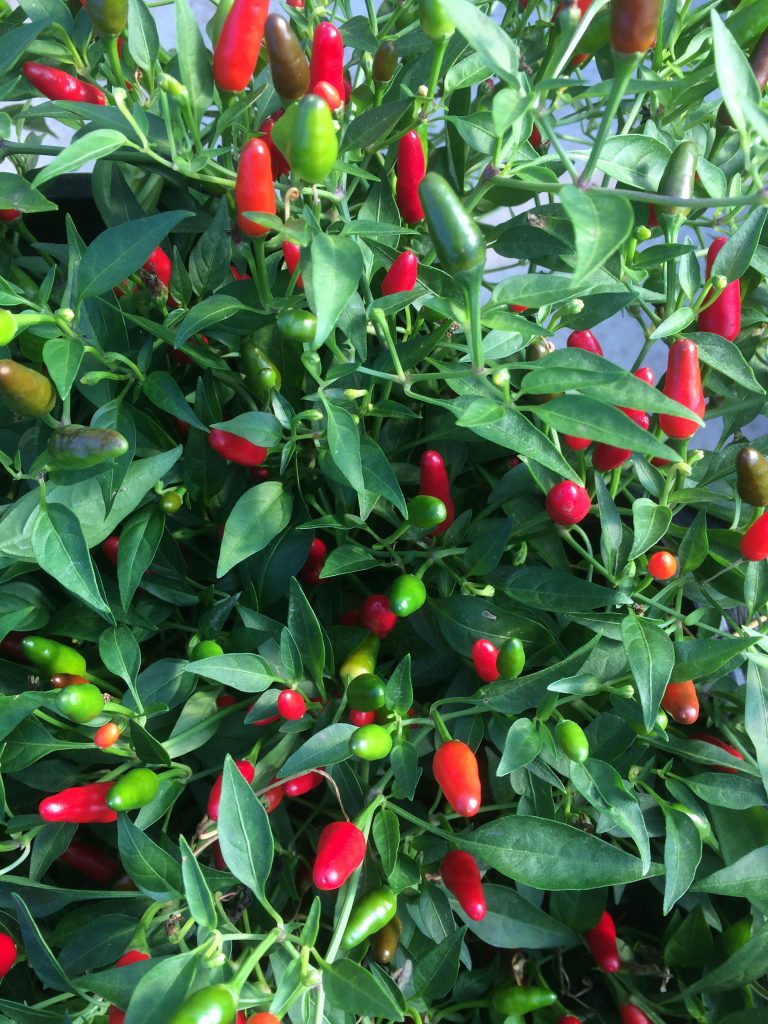
Hot Thai Chili 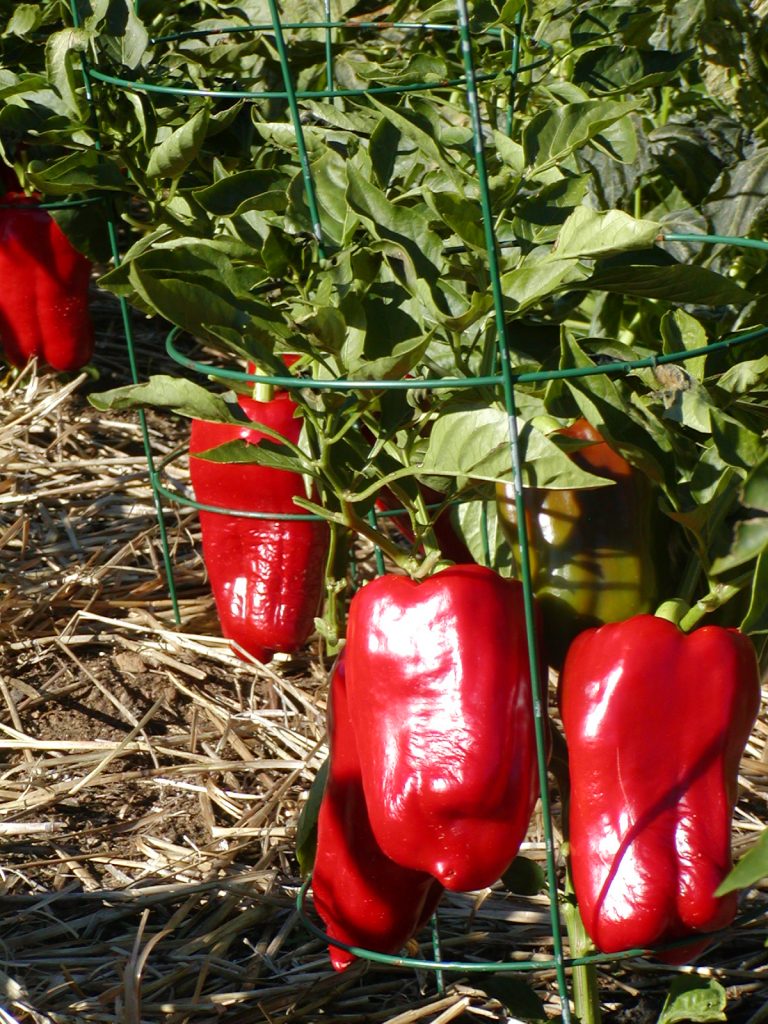
King of the North pepper 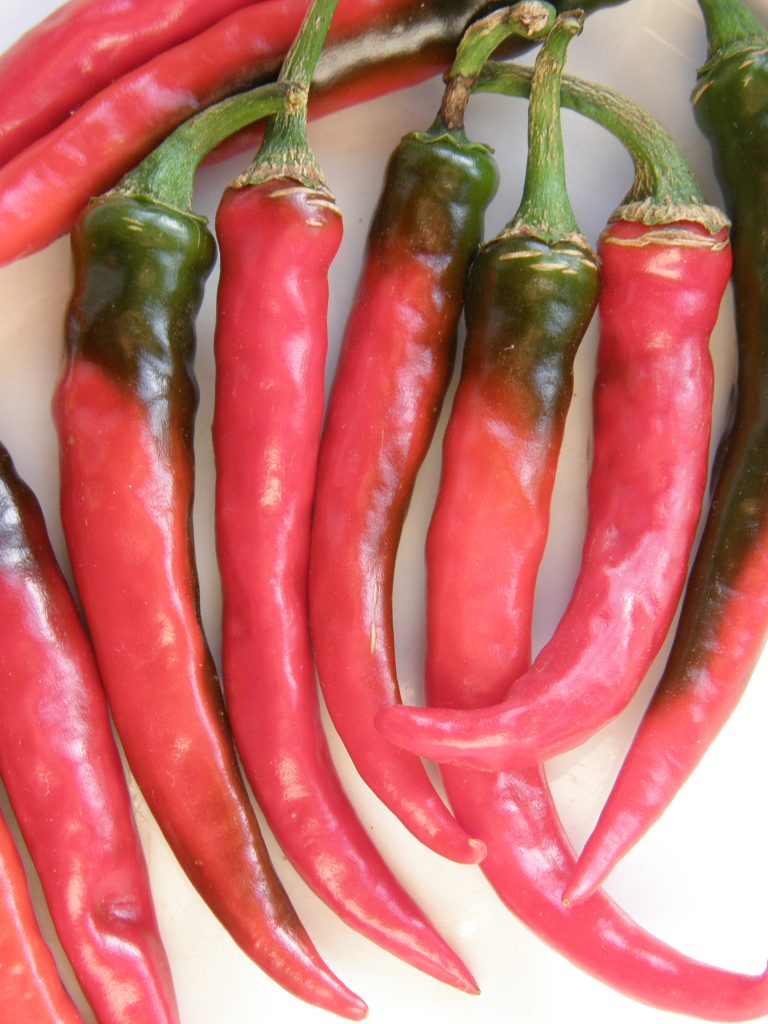
Cayenne pepper Ring of fire
Marconi Red Pepper - Thai Hot Chili Pepper - King of the North pepper - Cayenne pepper Ring of fire
Columbus gave the name pepper to the bell-shaped chili pepper brought back from his trip to Cuba in 1492, even though there was nothing spicy about its taste. The term pepper — derived from pepper — comes from this name and designates the sweet peppers bell type (bell pepper).
- All peppers are therefore chili peppers, but not all peppers are peppers!
In addition, whether they are peppers or chili peppers, these fruits take similar shapes which can be bell-shaped, elongated, round, cubic or misshapen.
To simplify classification peppers, the Jardins de l'écoumène gives all neutral and sweet peppers the name pepper. We therefore find them in the same boat!
The Scoville scale
In 1912, the American pharmacist Wilbur scoville provides scientific society with a scale for measuring the capsaicin in chili peppers, the active component that gives us that feeling of heat when we eat them.
The original scale has 35 levels of Scoville units, but fortunately for us, one simplified scale of 11 levels exists to facilitate its applications in the kitchen.
*SHU: Scoville Heat Units or Scoville heat units
The 11 degrees of the simplified table
Degree 0: neutrals
0–100SHU
These peppers contain no capsaicin or so little that it is not detected no heat by eating them. Their firm, thick and sweet flesh is often very fragrant! These are our classic bell-shaped peppers.
Grade 1: the meek
100 to 500 SHU
The peppers in this category give off a very subtle warmth in mouth. THE Iracema Biquinho and vegetarian are part of.
Degree 2: the warm ones
500 to 1 SHU
The taste of a hot chili pepper is barely pronounced and does not burn the mouth, even the most sensitive. THE hungarian paprika pepper is part of.
Level 3: statements
1 to 000 SHU
The strength of this pepper is still completely tolerable, while giving a slight bite to cooked dishes. THE Jalapeno Tâm pepper is the one you want if you like the delicious flavor of Jalapeño without the heat.
Degree 4: hot ones
1 to 500 SHU
A hot pepper warms the mouth when you bite into it, nothing more. It gives cooked dishes a rich flavor still very pleasant for all. THE Gorria pepper is part of.
Degree 5: the strong
2 to 500 SHU
The feeling of warmth can no longer be ignored with hot peppers, even by the least sensitive people. The orange jalapeño pepper is there.
Degree 6: the ardent
5 to 000 SHU
From here, the feeling of warmth mixes with a burning sensation that not everyone appreciates. Hot paprika pepper is a good example.
Degree 7: the burning
15 to 000 SHU
It is from here that people with taste buds very sensitive will suffer to sink your teeth into one of these raw peppers. We can already feel their warmth in the cooked dishes. THE Aurora pepper is part of.
Level 8: the torrid ones
30 to 000 SHU
As its name suggests, the heat released in the mouth by this pepper is not within everyone's reach. Only amateurs appreciate its very strong taste raw or cooked, but as a seasoning in a spicy salsa, it has no equal. THE cayenne pepper Ring of fire is part of.
Grade 9: volcanics
50 to 000 SHU
Fans of thrills are served with volcanic chili. Sensitive taste buds refrain! THE Hot Thai chili pepper is part of.
Degree 10: explosives
More than 100 SHU
Only the irreducible bite into an explosive pepper and do so at their own risk: narrowing of the arteries and blood vessels of the brain or perforation of the esophagus have already been observed in people who have abused it. In prepared dishes, a small quantity is enough to ignite your taste buds in a sustained manner. THE orange habanero pepper is part of.
The Strongest
Since 2013, the Carolina Reaper is the most explosive pepper with 2 units on the Scoville scale!

Do you want them strong?
Intensity of some hot peppers can disappoint when grown far from their ultimate comfort zone. Indeed, environmental conditions have their say:
– A daytime temperature of 35°C or more, rather poor soil and a dry passage between waterings will give hotter peppers ;
– A relatively cool daytime temperature (less than 30°C), soil rich in nitrogen and constant humidity in the soil soften the taste peppers, even the hottest ones, without making them harmless.
By planting your hot peppers in dark pots which perspire well - terracotta, for example -, the ideal conditions to the cultivation of peppers in Quebec will be easier to achieve!




